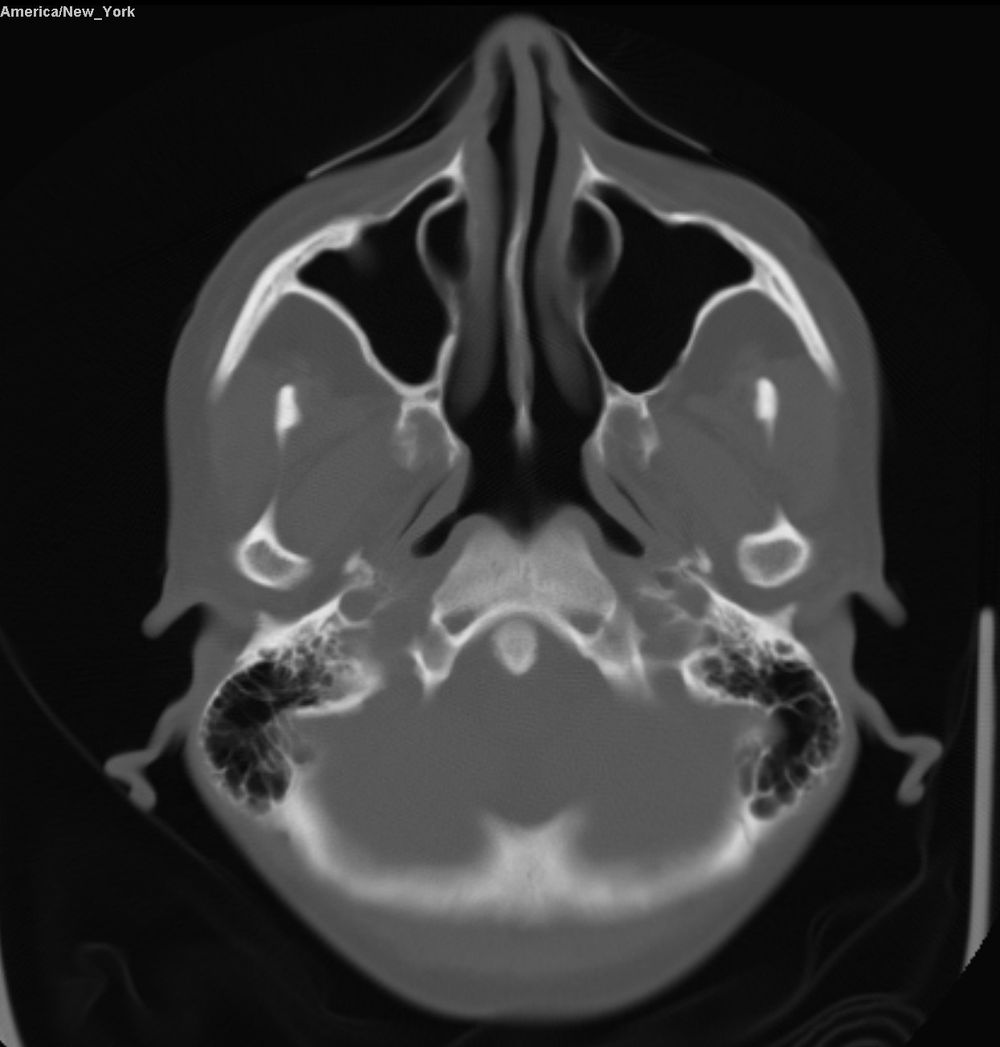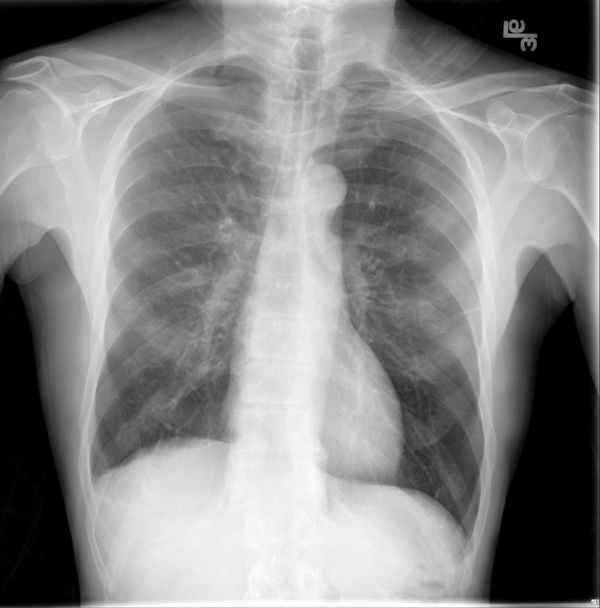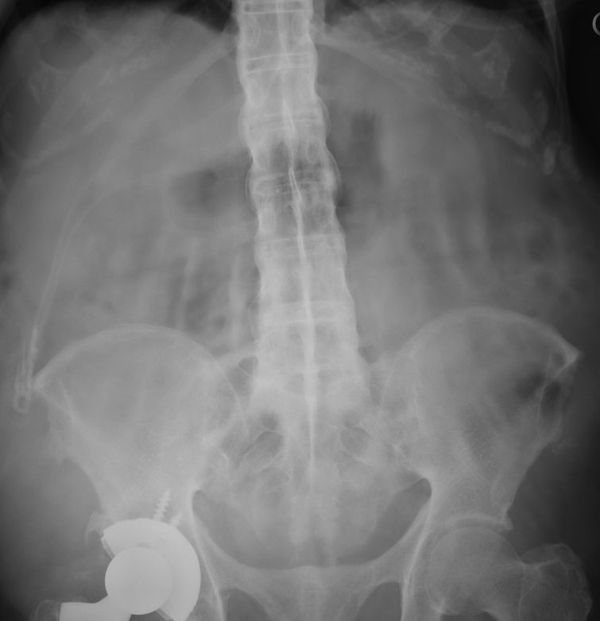Season 10 Case 10
History: Head and neck pain. No history of trauma
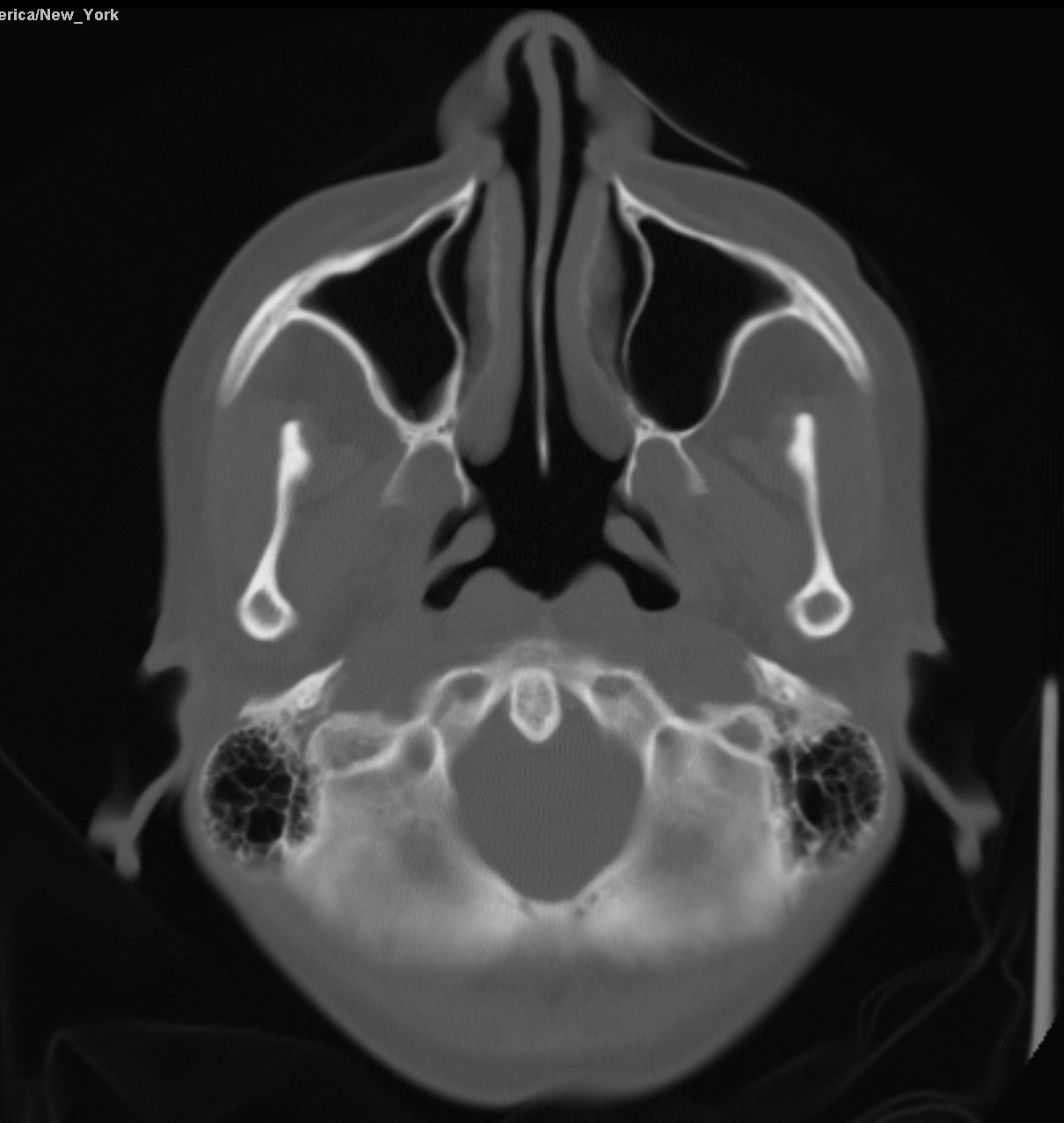
Would you like more images?
Click Here
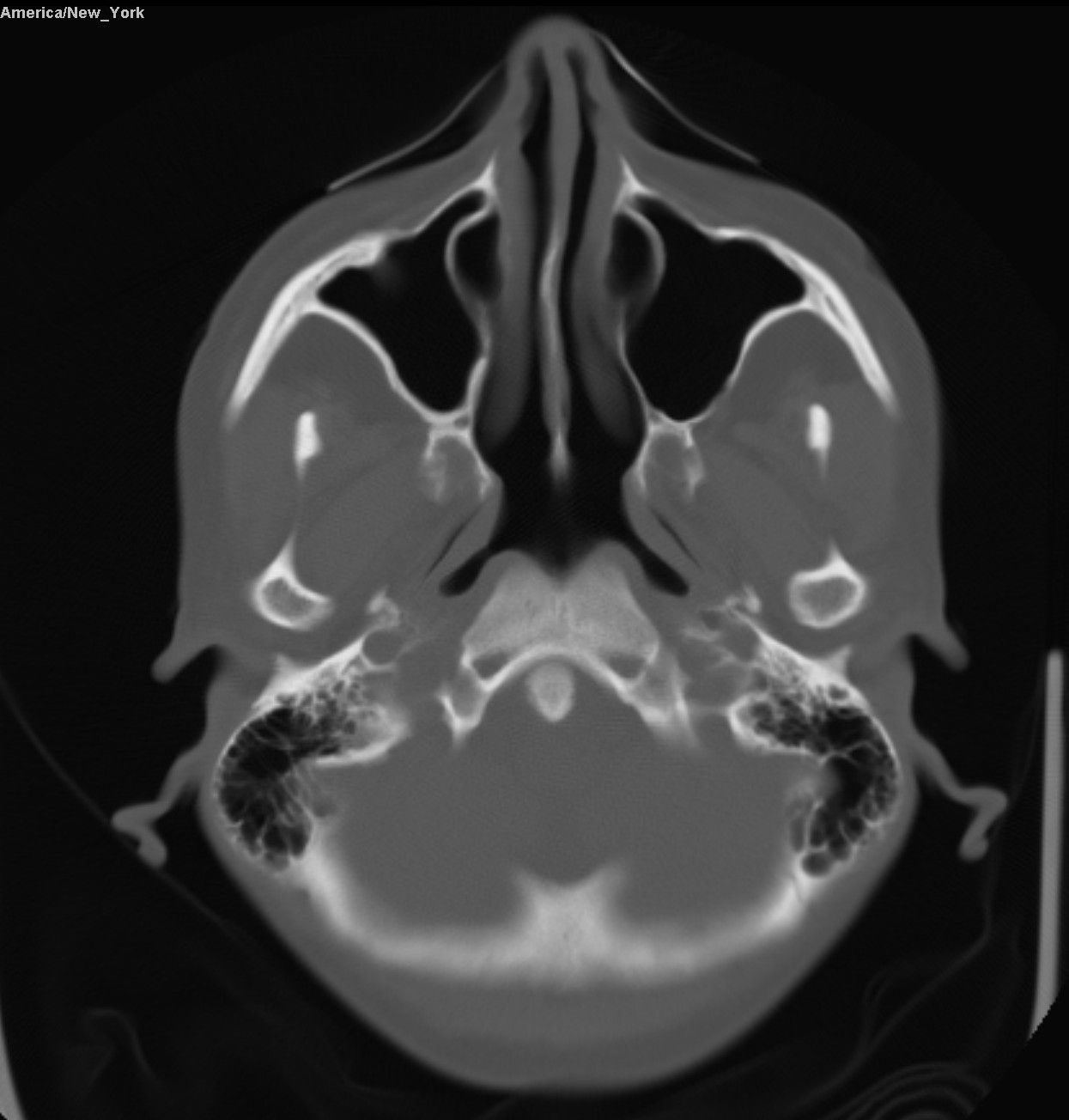
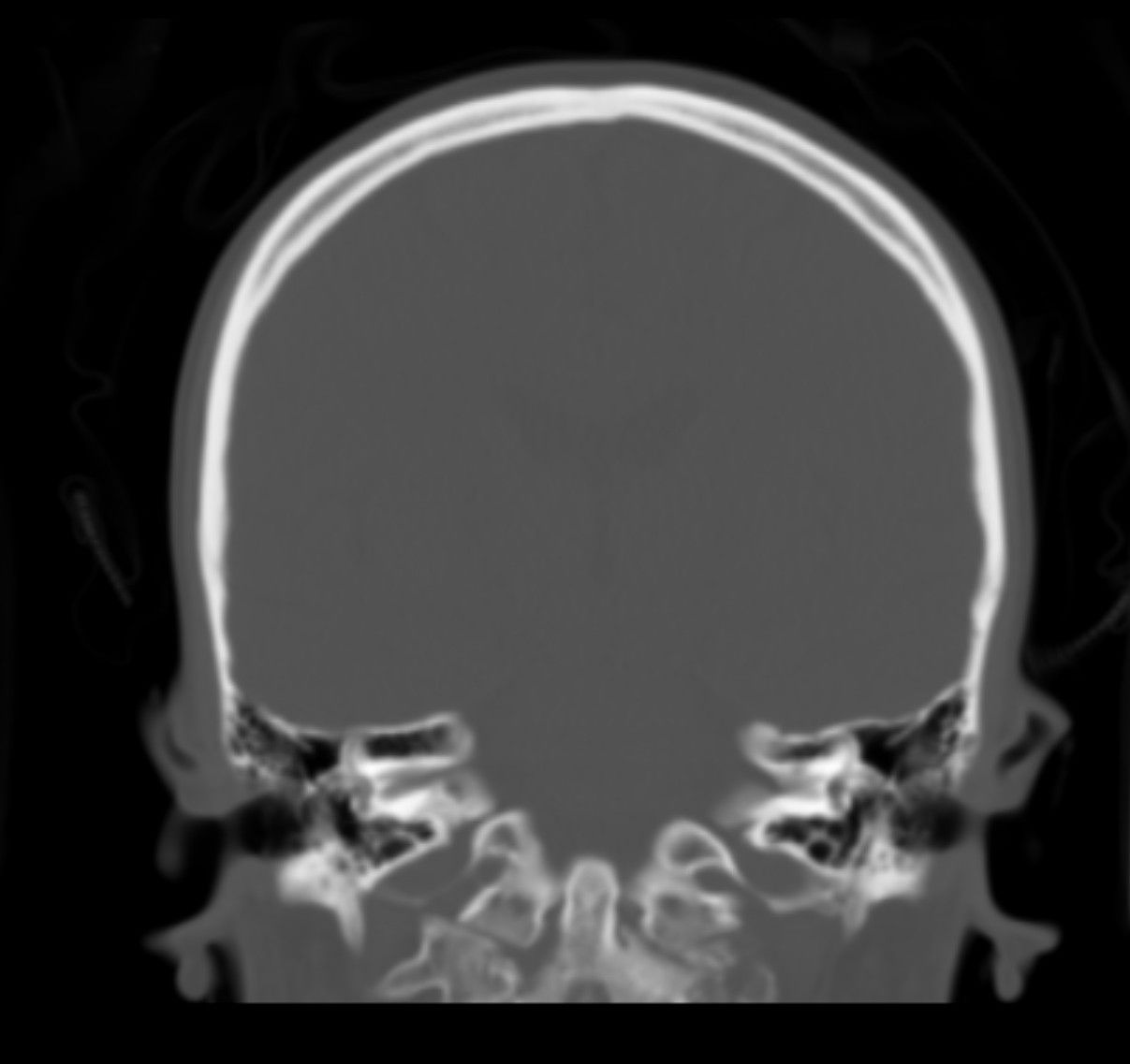
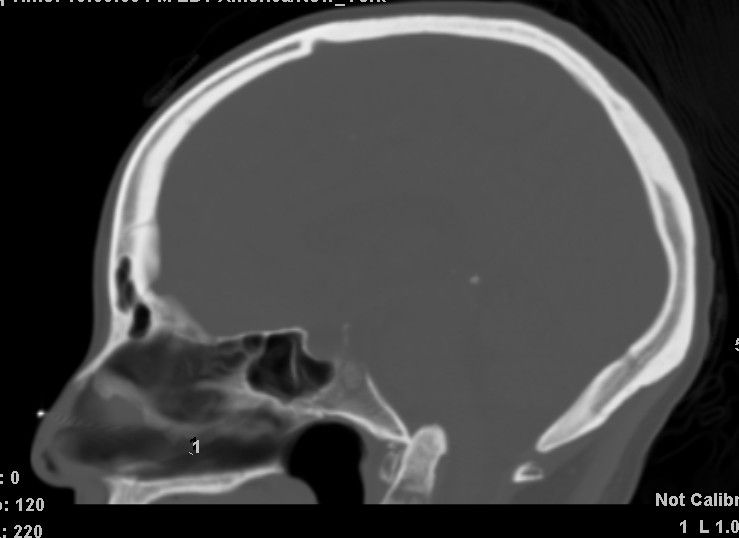
Answer:
CLICK HERE FOR ANSWER
Answer: Basilar Invagination
Basilar invagination is when the tip of the odontoid process extends above the foramen magnum into the cranial vault. This yields narrowing/stenosis of the foramen magnum and thus mass effect/compression of the medulla or upper spinal cord. This results in:
- obstructive hydrocephalus
- neurologic symptoms of compression of the brainstem/spinal cord
- syringomelia
- even death if severe
Note: basilar invagination and basilar impression are similar terms but not identical. Basilar impression specifically refers to when there is invagination due to "settling" or "softening" of the skull base without other identifiable cause. Both can yield the same symptoms.
Etiology
Congenital:
- Chiari I/II malformations
- osteogenesis imperfecta
- Achondroplasia
- rarer entities such as Klippel-Feil syndrome or cleidocranial dysostosis
Acquired: - Rheumatoid arthritis (can be seen in up to 10% of RA patients)
- Osteomalacia/rickets
- Paget's disease
- Hyperparathyroidism
- Trauma
Radiology
Diagnosis of basilar invagination relies on the classic 5 lines on plain films or reconstructed CT:
Lateral view:
- McRae's line: tip of basion to opisthion (tip of odontoid should be 100% below this line)
- Chamberlain's line: posterior point of hard palate to opisthion (tip of odontoid should be <3mm below this line)
- McGregor's line: posterior point of hard palate to most caudel point of the occipital condyles (tip of odontoid should be <5mm above this line)
Basion = posterior, inferior tip of the clivus
Opisthion = most posterior margin of the foramen magnum at midline
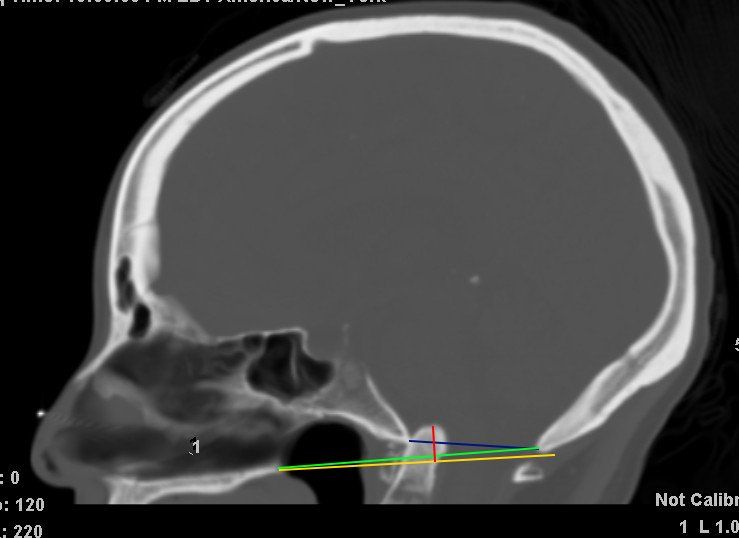
Frontal View
- Digastric line - between the bilateral digastric grooves (odontoid should be 11-21mm below this line)
- Bimastoid line - between inferior points of mastoid processes (odontoid should not extend >10mm above this line)
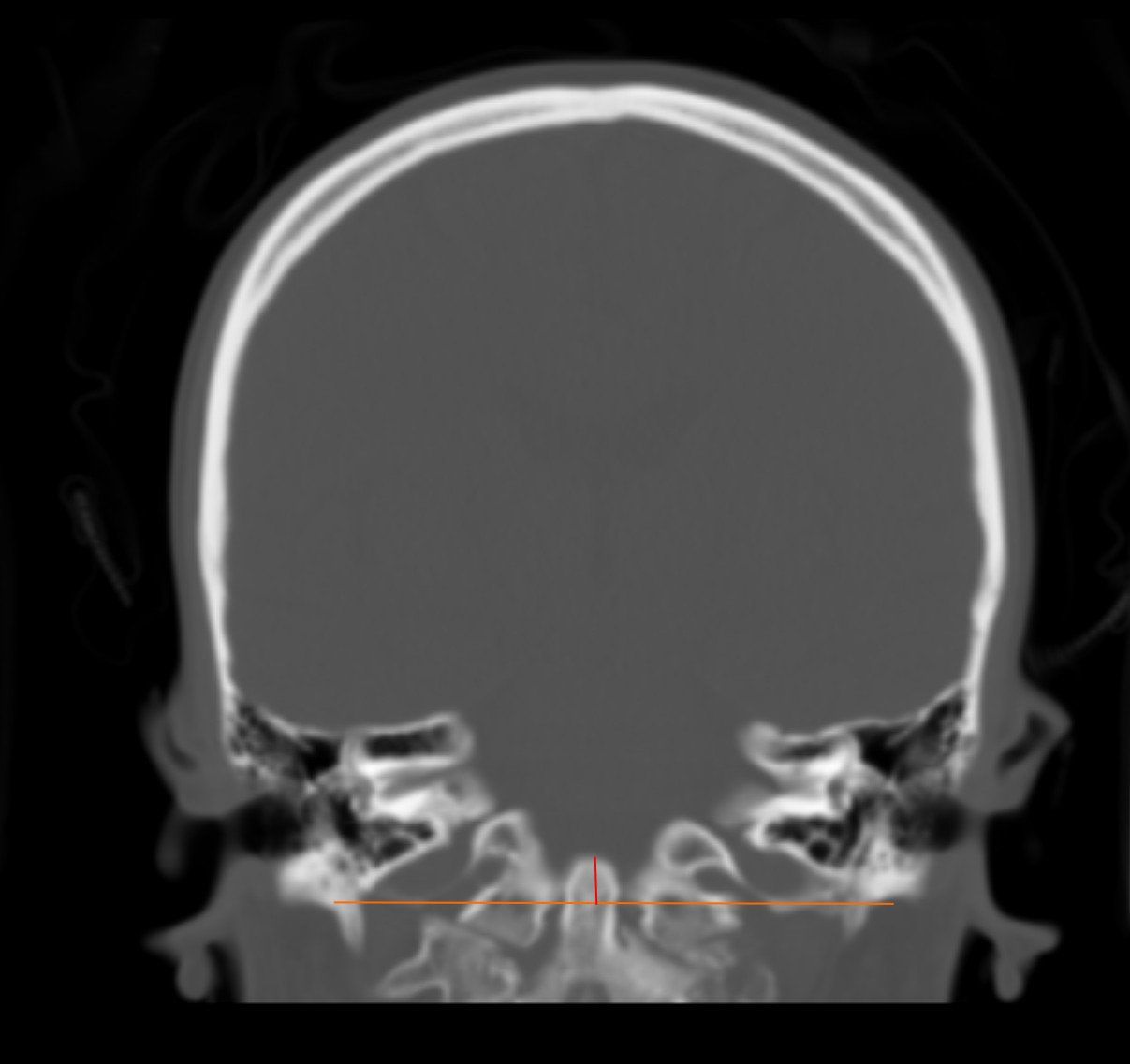
Our Patient
I actually went easy on you. The only real history in this case was "headache". No neck pain reported. No CT C-spine ordered. This was an incidental finding. Do you happen to see why?
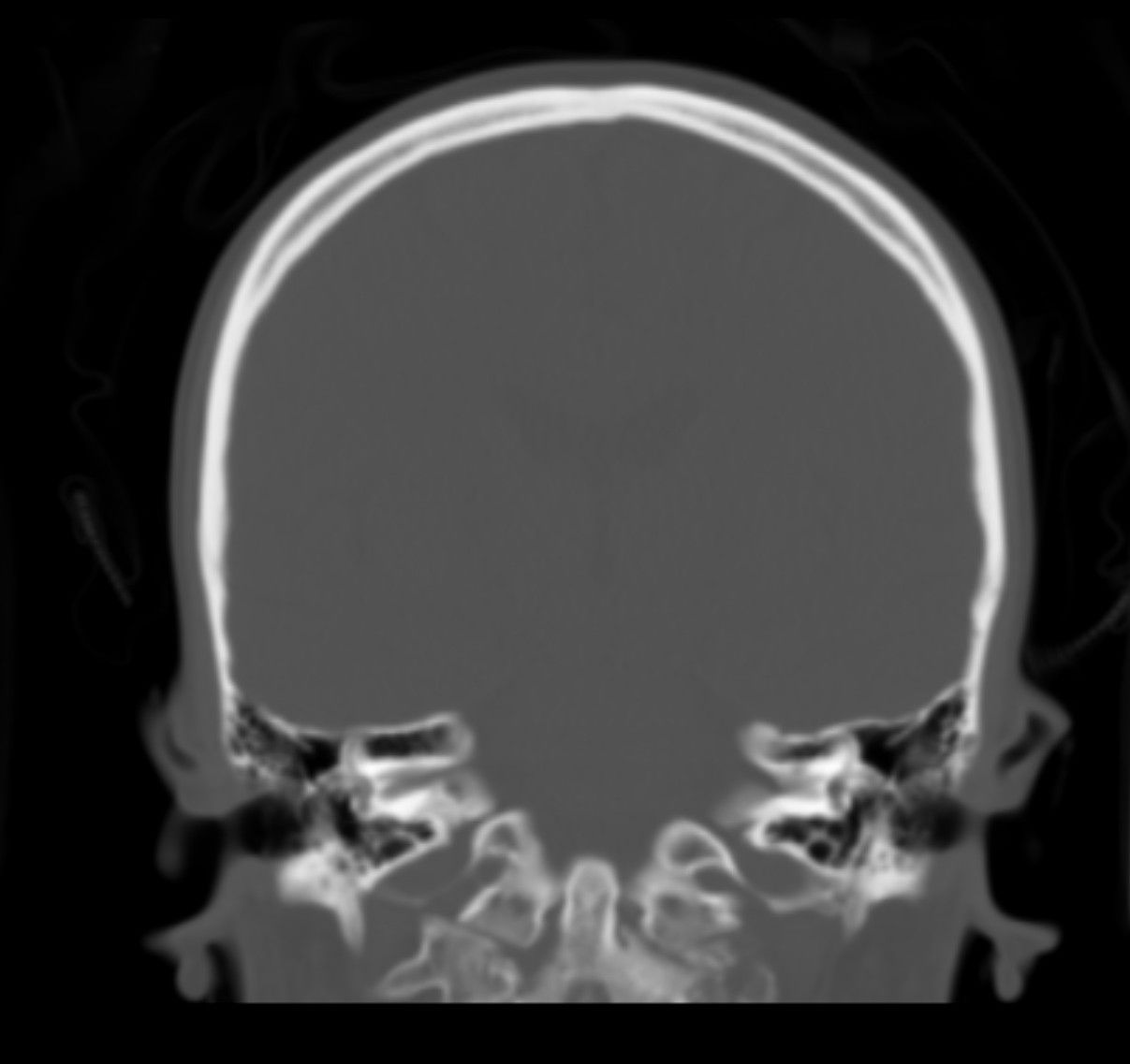
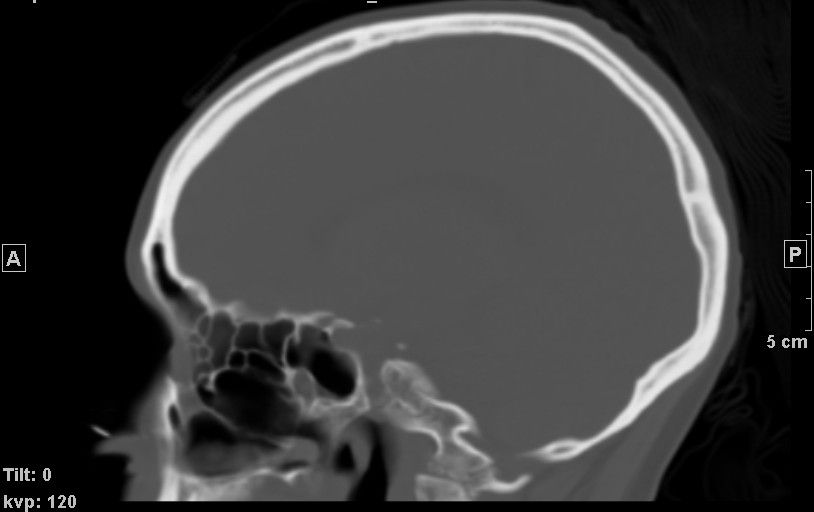
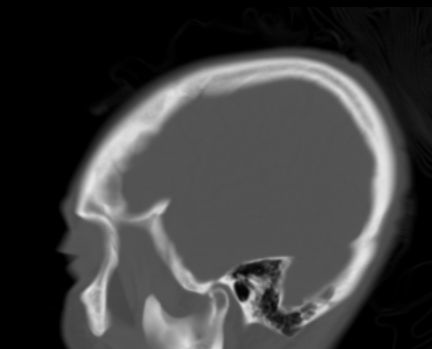
Notice that C1 is actually completely collapsed and fragmented on the left. This is both causing the malalignment at the right atlantooccipital joint, but also causing the dens to protrude upward through the foramen magnum.
Unfortunately this patient had known metastatic breast cancer so here we have a pathologic fracture with complete collapse/flattening ("plana" deformity) of the left lateral mass of C1.
I will admit, I am not the biggest fan of memorizing numbers. In this situation I tend to rely much more upon McRae's line since that is a much more binary decision. If the odontoid tip goes above the line = BAD. If it goes to the line, maybe that's when I get out my ruler... maybe :)

